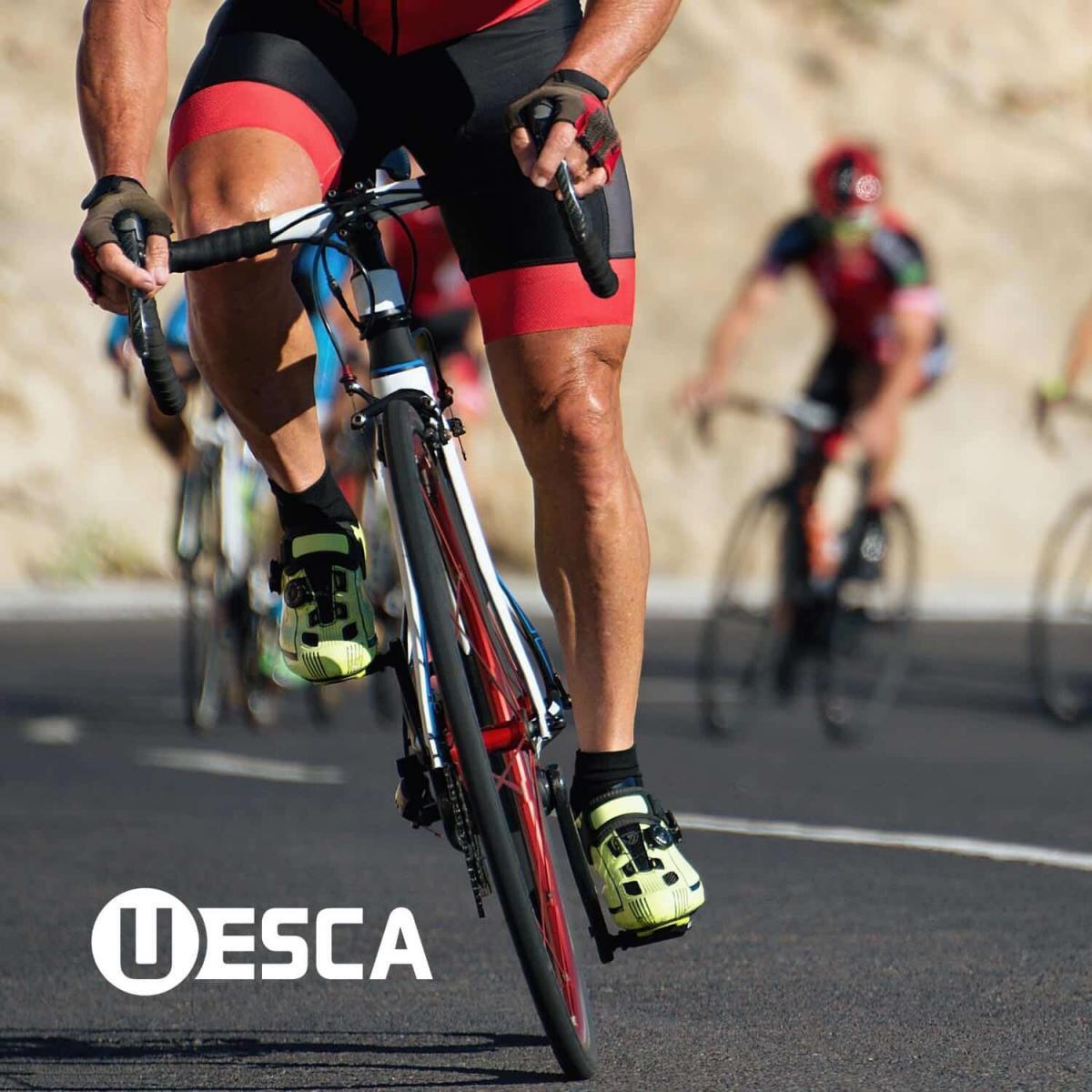Ankles and ankle position can be a significant key to proper peddling mechanics. Learn how your ankles can be the key to pushing more power on the bike.
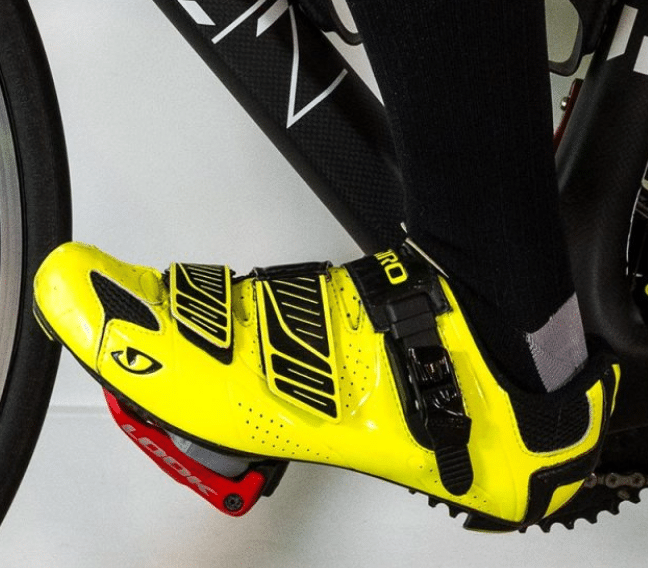
There was a time not too long ago, if you wanted an accurate assessment of your power output while cycling, you had to head to a physiology lab – not so anymore. Nowadays, on-the-bike power meters are as ubiquitous as heart rate monitors used to be. Due to this, there are endless articles and resources about how to increase ones power output on the bike. Some of the more common ‘methods’ are resistance training, plyometrics, riding in a big gear, intervals, etc…
Not that any of these things are inherently bad or incorrect, however, most all of the resources noting how to increase power miss a critical element – the ankle position during the downstroke.
Low Hanging Fruit
As noted above, things such as intervals and explosive strength training will no doubt increase one’s power. However, a lot of training is required to get the desired results in terms of increased power output.
By contrast, modifying one’s ankle position during the downstroke is a much faster (and easier) way of increasing one’s efficiency and power on the bike. Consider this the low hanging fruit that should be addressed first.
Are You Slipping Or Pushing?
I think that we can all agree that if you want to increase your power, you need a stable platform to push against. This is common sense and relates to everything from walking to cycling to weight lifting. So why is it that so many cyclists don’t push against a stable platform?
Most competitive cyclists and triathletes wear cleated cycling shoes in tandem with clipless pedals. While there are many reasons for this and we would never advocate not using them, they also hide flaws in the pedal stroke that limit one’s efficiency. When ‘clipped in‘ to the pedals (like ski bindings), the foot can’t move fore/aft, or side-to-side. Therefore, even if one’s pedaling form is incorrect, it is likely not evident to the rider as their foot is firmly attached to the pedal.
When I work with cyclists that have incorrect pedaling mechanics in regard to the degree of ankle dorsiflexion (heel down, toes up) during the downstroke, I have them set their bike up on an indoor trainer and ride normally in their cycling shoes. THEN… I have them take off their cycling shoes and put on sneakers or flat shoes with a smooth bottom (ex: dress shoes).
What happens?
Their feet slide off the front of the pedals because they don’t have a stable platform to push against. This demonstration and experience on the part of the cyclist is usually enough for them to want to correct their mechanics.
Pro’s Don’t Always Get It Right
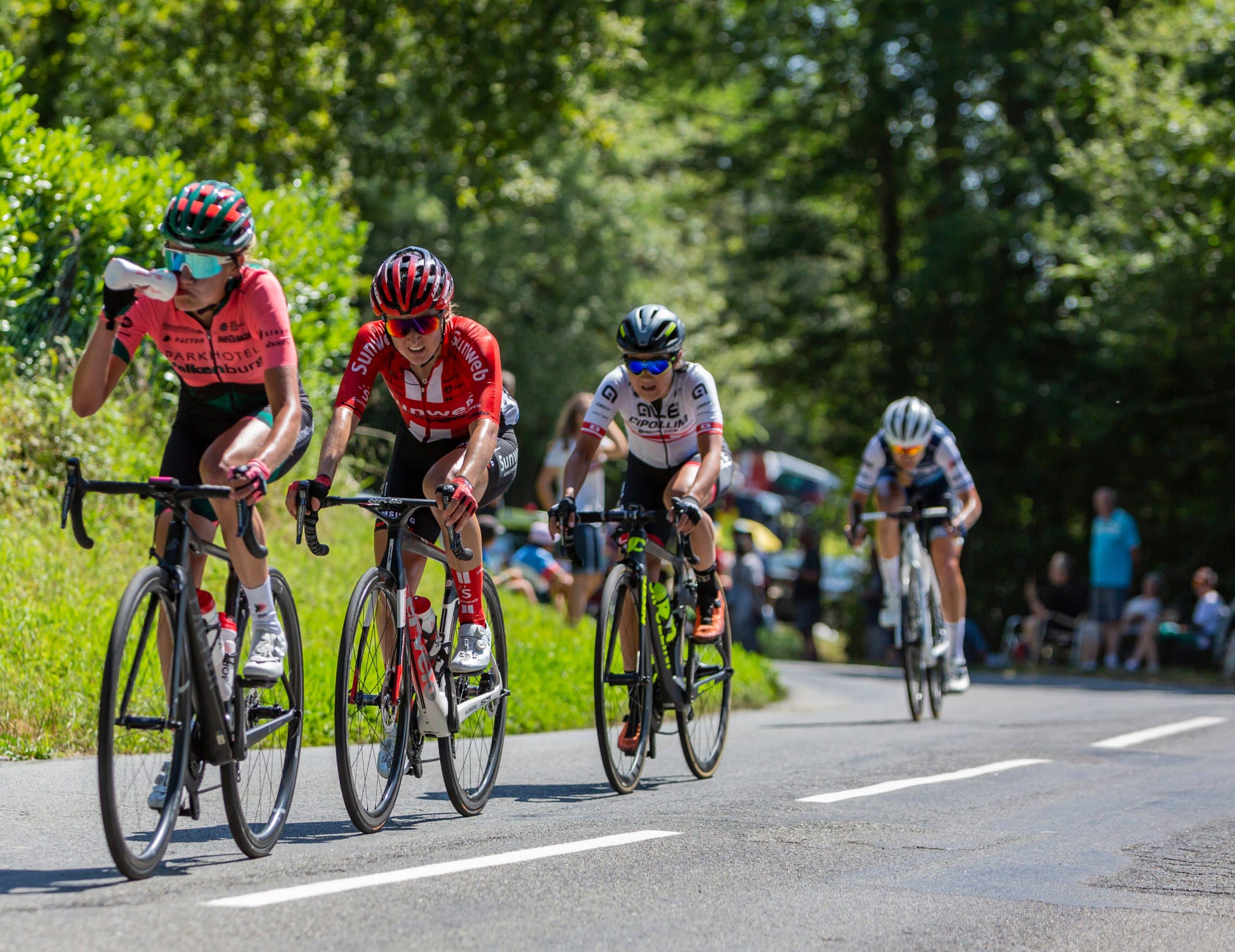
Before we go any further, I can hear it right now… “but, {insert favorite professional cyclist} rides with their heel up during the down stroke and they won 3 world championships!” Fair enough, but they are also genetic freaks that could also probably ride a tricycle with two of the three wheels flat and still win the Tour De France!
Point being, just because someone gets paid a salary to pedal their bike doesn’t mean that their form is necessarily correct.
Incorrect / Correct Pedaling Mechanics
From a foot position perspective, when the heel is higher than the forefoot during the downstroke, the direction of force is going across the top of the pedal, not into it – hence, the prior example of the foot slipping off the pedal when wearing sneakers.
Aside from not knowing the proper mechanics, there are three primary variables as to why this occurs:
- Too forward of a saddle position
- Poor ankle (soleus) flexibility
- High ankle/heel position at 12 o’clock
Conversely, in respect to correct pedaling mechanics, at the 12 o’clock position, the foot should be flat or with a slight drop of the ankle. This position sets a cyclist up to have a solid platform to push against.
Below images of what correct and incorrect foot/ankle positions look like at 12 and 9 o’clock.
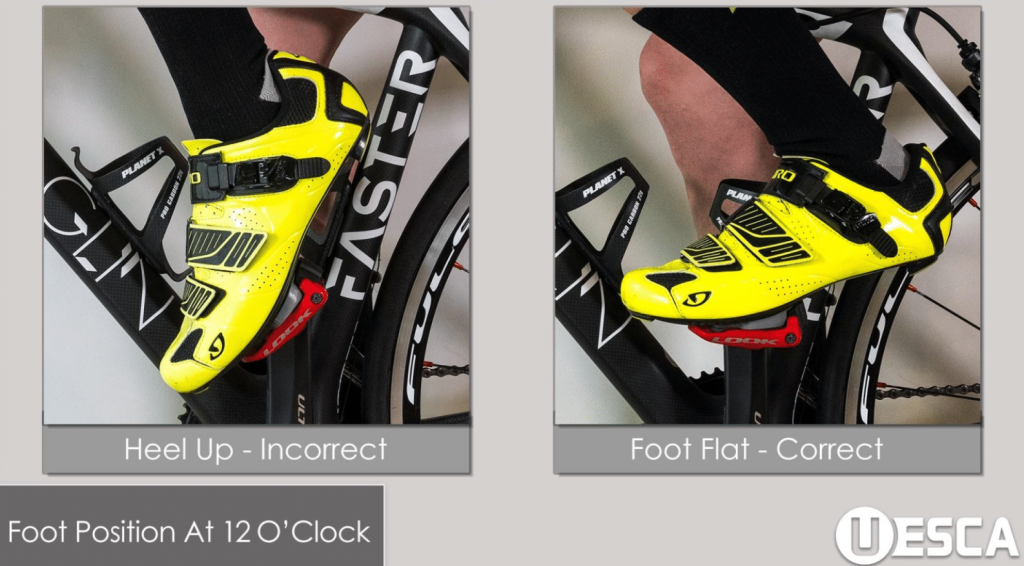
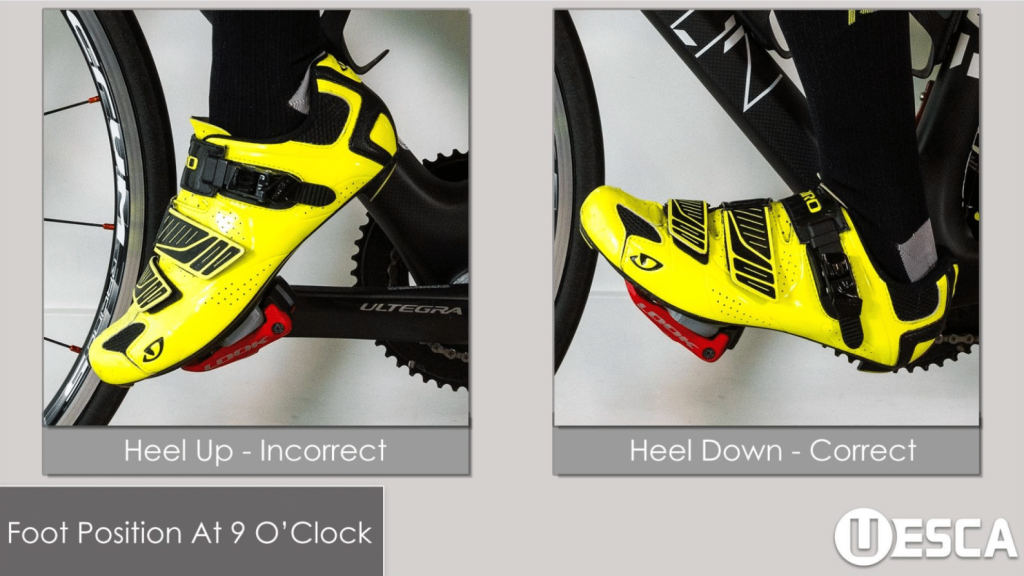
Below are two videos that depict correct and incorrect pedaling mechanics while riding – note, the heel drop in the video is exaggerated to denote the ‘pushing’ aspect of the pedal stroke.
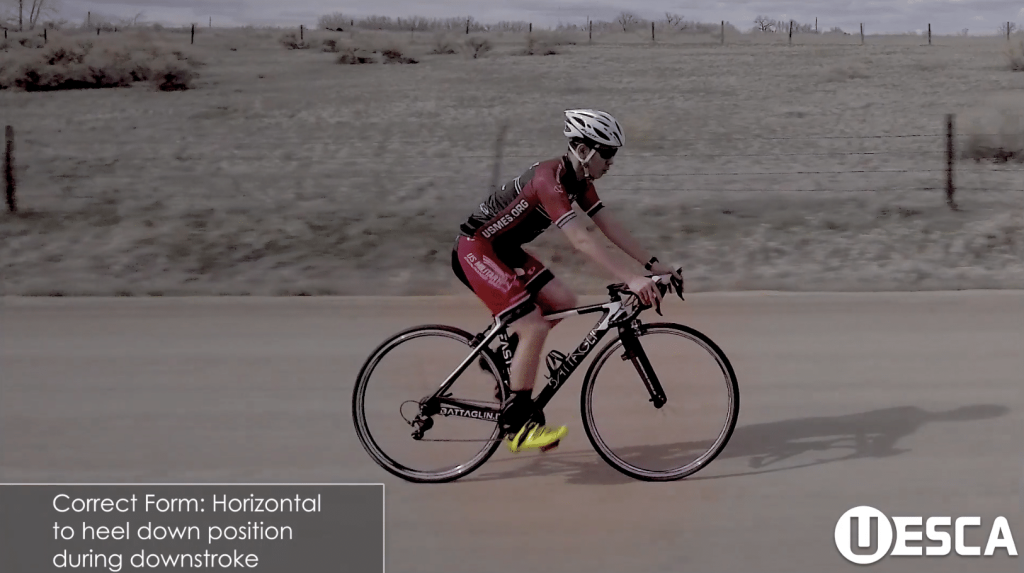
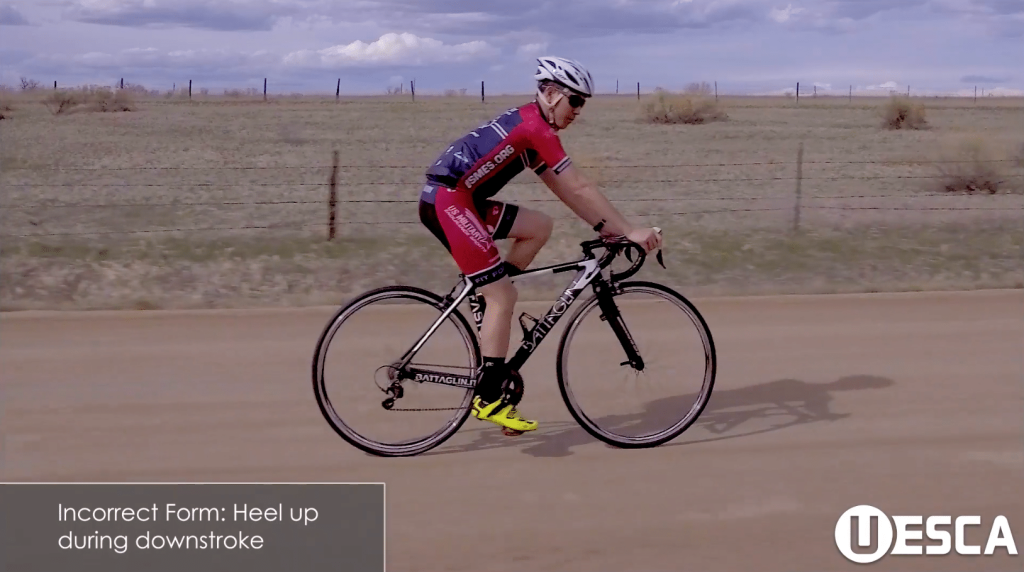
Strong Muscles
While dropping the heel during the downstroke may seem like a small mechanical feature, not only does it impact the power transfer, but also the primary muscles being utilized. When pushing down on the pedals with the heels up, the quadriceps are emphasized. However, when you drop the heels during the down stroke, the glutes are much more involved. As the glutes are much more powerful than the quads in a pushing motion, it increases the force than is being generated by a cyclist. Think about it… in a gym setting, can you ‘lift’ more weight on the leg press (glutes) or leg extension (quads) machine? The leg press… by far!
Hip Motion
Another issue often correlated with a high heel position at 12 o’clock is that the hips often tilt side-to-side. This is often the case with new cyclists.
Regardless if the foot/ankle mechanics of a cyclist are efficient or not, the more time a cyclist spends riding with a particular form, they will become used to it and likely, their body will adapt to it. For example, if you look at professional cyclists with poor pedaling mechanics, their pedal stroke still looks quite fluid and their hips don’t rock side-to-side. But… this is by no means indicative of correct form but rather that they have adapted to it over a period of time.
Summary
If you’re looking to improve your efficiency and power on the bike, it’s fine to add in strength training, intervals and explosive-type training – however, the starting point should be addressing your pedaling mechanics and specifically, ankle dorsiflexion during the downstroke.


